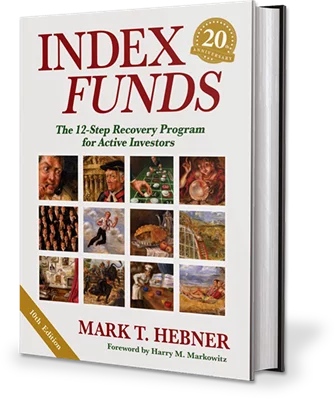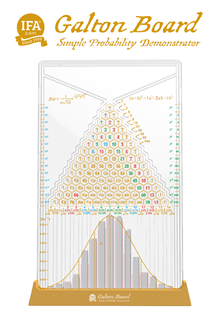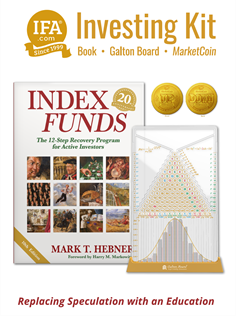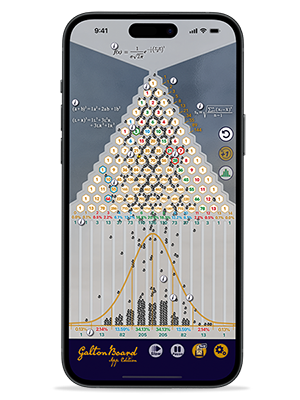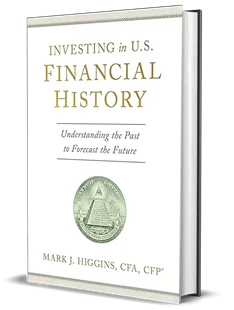More than a century ago, mathematician Louis Bachelier proposed that the movements of stock prices resemble the unpredictable motion of particles suspended in a liquid—what scientists later called Brownian motion. His 1900 doctoral thesis, Théorie de la Spéculation, introduced the radical idea that market fluctuations might be fundamentally random.
Since then, generations of economists and statisticians—from Kendall and Cowles to Samuelson and Fama—have tested, refined, and redefined this idea. At Index Fund Advisors, we revisit this intellectual lineage through an empirical lens: a digital coin experiment called Mark Hebner's MarketCoin. The goal is to see whether the data still align with the hypothesis that markets behave as a random, yet efficient, process.
Historical Context: The Random Walk, the Martingale, and the Coin Toss
The idea that market movements resemble random coin flips dates back more than a century. In 1900, Louis Bachelier introduced this concept in his doctoral thesis, Théorie de la Spéculation, describing how prices evolve through "oscillations that are as independent of one another as successive coin tosses." His mathematics foreshadowed what later became known as Brownian motion, the foundation of modern financial modeling.
Half a century later, Maurice Kendall (1953) observed that stock price changes appeared statistically random, with no discernible pattern from one period to the next. Paul Samuelson (1965) formalized this in economic terms, showing that in an efficient market—where prices fully reflect all available information—price changes must follow a random walk. Alfred Cowles, decades earlier, had reached a similar empirical conclusion: even professional forecasters failed to outperform simple randomness.
Eugene Fama synthesized these ideas in his landmark papers "The Behavior of Stock-Market Prices" (1965) and "Efficient Capital Markets: A Review of Theory and Empirical Work" (1970). In the first, he described the random walk hypothesis as the idea that successive returns—whether measured daily, monthly, or annually—are independent and identically distributed. In other words, the sequence of returns has no memory; past results cannot predict future ones.
By 1970, Fama reframed this more rigorously in mathematical terms. He demonstrated that the random walk is actually a special case of a broader process known as a martingale, or what he called a "fair game."
This means that the expected next-period return, conditional on all current information, is zero (or more precisely, equal to the market's risk-adjusted expected return). The martingale model allows for varying levels of volatility and risk, but maintains one essential condition: returns remain unpredictable in direction relative to a postive risk appropriate return.
As Fama wrote:
"The random-walk model is a special case of the martingale (‘fair game') model when successive returns are both independent and identically distributed."
— Eugene F. Fama, 1970, p. 389
This insight clarified a subtle but crucial distinction:
- The martingale condition requires only that returns are unbiased and unpredictable.
- The random walk adds stricter assumptions of identical distribution and independence across time.
Thus, the Efficient Market Hypothesis (EMH) can be viewed as asserting that returns behave like a martingale—a process with no predictable component—rather than as a perfect random walk.
The MarketCoin Experiment: Testing Market Randomness
To explore this principle in practice, IFA's MarketCoin uses a fair digital coin to test whether real-world returns behave like independent coin flips.
For each of 6,500 trading days, a digital coin is flipped to produce an "Up" or "Down" result. Each day's actual market return—measured relative to the median daily return of about 0.1% for a globally diversified equity portfolio of index funds—is classified as either "Up" (above the median) or "Down" (below it).
Each day, the MarketCoin outcome is paired with the market's outcome, creating four possible categories:
|
MarketCoin |
Market Return |
Outcome |
|
Up |
Up |
UU |
|
Up |
Down |
UD |
|
Down |
Up |
DU |
|
Down |
Down |
DD |
When this experiment is run 1,000 times, the average count of outcomes across all simulations converges toward 25% in each of the four buckets—exactly what probability theory predicts for two independent fair coins.
We repeated this analysis with different periods of almost 1,200 months 97 years of annual years—running 10,000 and 100,000 trials, respectively. The results were consistent: approximately 25% in each outcome.
This remarkable uniformity across timeframes provides strong empirical evidence that market returns, relative to the median return, behave as a martingale. These results do not predict future performance or behavior but align conceptually with the random walk and efficient market hypothesis. That is, daily, monthly, and annual returns are unpredictable from one period to the next, yet fully consistent with the logic of market efficiency.
Runs Tests and Coin-Flip Intuition
Economists such as Fama (1965) and Kendall (1953) used runs tests—a nonparametric method that counts sequences of "ups" and "downs"—to detect any deviation from randomness. If markets were predictable, we would see more or fewer runs than expected by chance.
But when Fama applied this test to stock returns, the pattern of runs closely matched the coin-flip benchmark. His findings were consistent with a martingale process: independent direction, unpredictable sequence.
The MarketCoin framework mirrors this logic in visual form that is relateable to just about everyone. The four equally weighted outcomes—UU, UD, DU, DD—are the two-dimensional analog of a runs test, just as the Pascal's Triangle or Galton Board demonstrates how randomness in repeated coin flips produces the familiar Gaussian bell curve. The market's long-term distribution behaves no differently.
Why This Matters for Investors
For long-term investors, this insight carries profound implications. If markets follow a martingale process, then no amount of chart reading, technical analysis, or short-term forecasting can systematically predict future returns. Prices already reflect all known information, and new information—by definition—arrives randomly and is immediately reflected in prices.
Recognizing this allows investors to focus on expected risk and return, including equity and fixed income factor allocations, diversification, discipline, and time in the market rather than past chasing patterns that were just the result of randomness. The MarketCoin experiment turns the abstract mathematics of randomness into a tangible demonstration of what Bachelier envisioned, Samuelson formalized, and Fama proved: that market efficiency is indistinguishable from chance—and that's precisely why index investing works.

References
- Bachelier, L. (1900). Théorie de la Spéculation.
- Kendall, M. G. (1953). The Analysis of Economic Time-Series. Journal of the Royal Statistical Society, 96(1), 11–25.
- Samuelson, P. A. (1965). Proof That Properly Anticipated Prices Fluctuate Randomly. Industrial Management Review, 6(2), 41–49.
- Cowles, A. (1933). Can Stock Market Forecasters Forecast? Econometrica, 1(3), 309–324.
- Fama, E. F. (1965). The Behavior of Stock-Market Prices. Journal of Business, 38(1), 34–105.
- Fama, E. F. (1970). Efficient Capital Markets: A Review of Theory and Empirical Work. Journal of Finance, 25(2), 383–417.
- Mandelbrot, B. (1963). The Variation of Certain Speculative Prices. Journal of Business, 36(4), 394–419.
Disclosure:
While this analysis demonstrates one plausible interpretation of market randomness for illustrative purposes, it does not predict future investment performance or guarantee an efficient market in every scenario. This is not to be construed as an offer, solicitation, recommendation, or endorsement of any particular security, product, or service. This article is for informational purposes only and does not constitute personalized investment advice. Performance results referenced reflect historical and academic analyses and are not indicative of future outcomes. Past data is net of certain costs but should not be construed as representative due to varying fees, expenses, and unpredictable market conditions. Momentum strategies, for example, are subject to sub-period volatility which may produce inconsistent results.
All investments carry risks, including the potential loss of principal. The article references empirical research from academia and industry. While foundational principles of diversification and low costs are illustrated with real-world results, outcomes depend heavily on economic conditions, trading environments, and individual circumstances. We recommend consulting a qualified financial advisor before making any investment decisions to ensure alignment with personal financial goals, risk tolerance, and circumstances.
For full compliance discussion and detailed services information about IFA,,standards, compensation, and potential conflicts of interest, please visit www.adviserinfo.sec.gov and our firm brochure at www.ifa.com.





